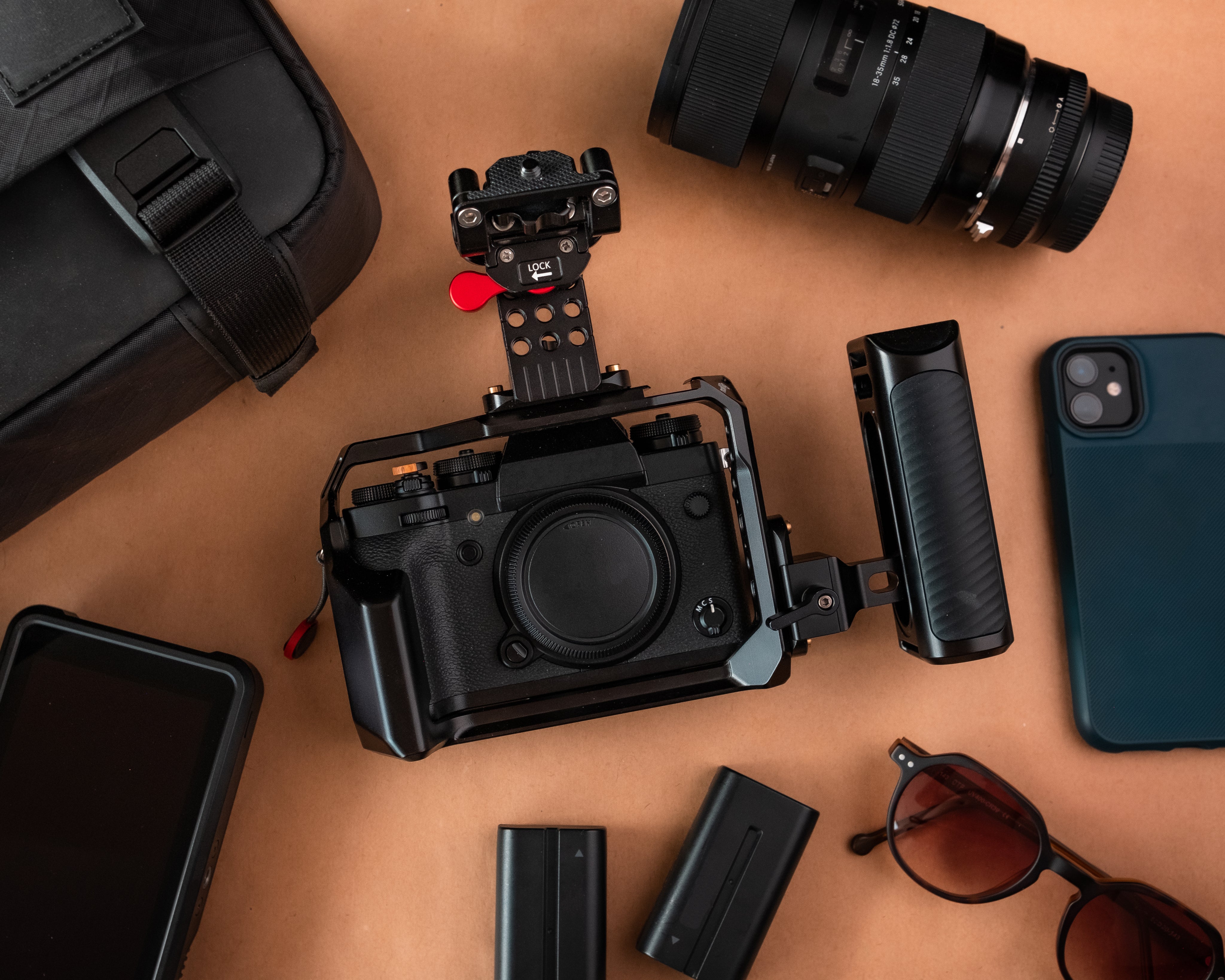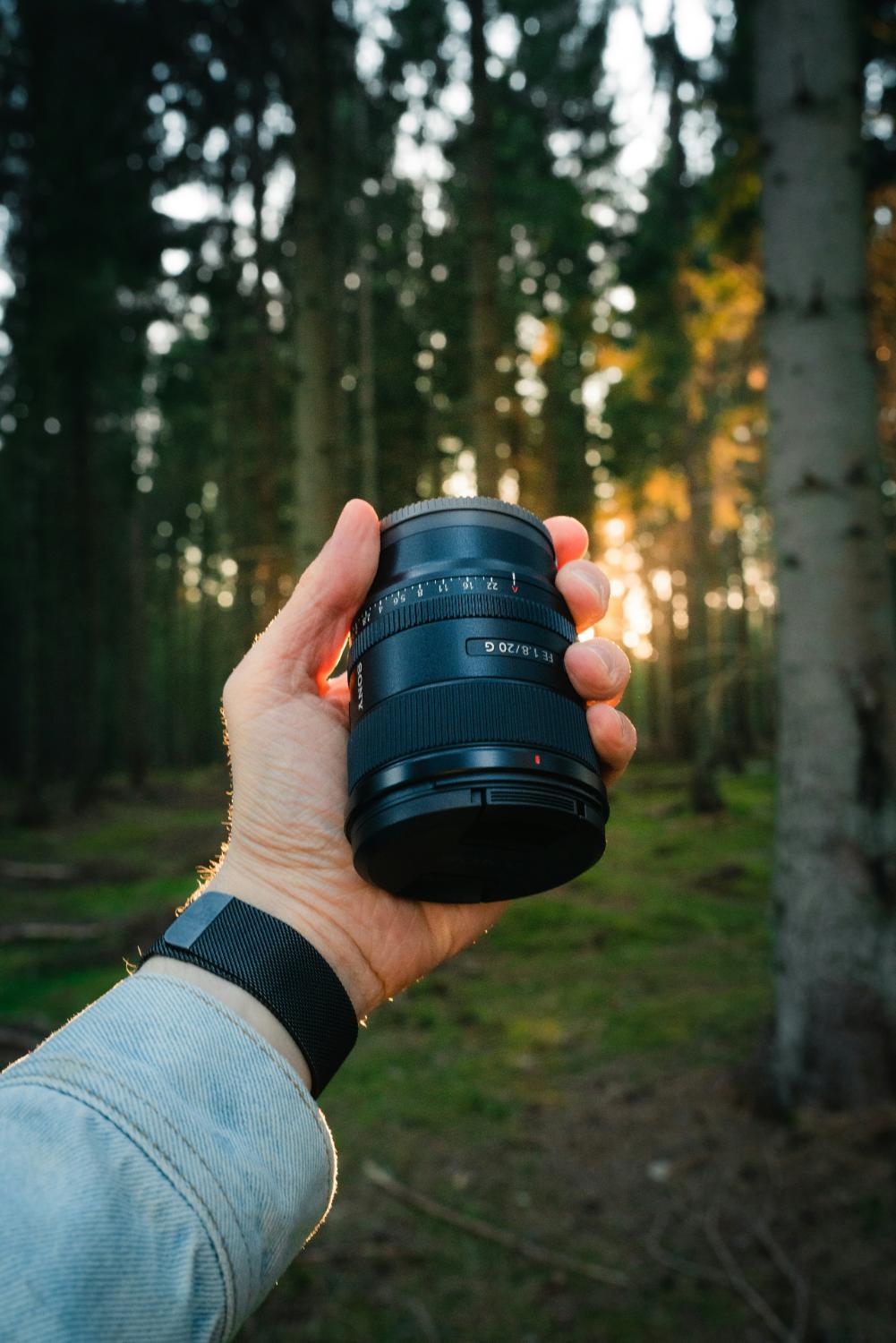
Canon
Canon EOS C500 Mark II 5.9K Full-Frame Camera Body (EF Mount)
Pickup currently unavailable at KAMERAZ
Canon EOS C500 Mark II 5.9K Full-Frame Camera Body (EF Mount)
KAMERAZ
Pickup currently unavailable
Kameraz, Stonemill Office Park
Darrenwood
Johannesburg
Gauteng
2195
South Africa
Choose options
Sensor
The full-frame CMOS sensor captures a clean, low-noise image with over 15 stops of dynamic range, and it has a color gamut that exceeds the BT-2020 specs. The sensor is capable of capturing footage in a variety of aspect formats, including DCI-4K, UHD and Anamorphic Widescreen. In addition to shooting using the sensor's full-frame size, you can use a variety of spherical and anamorphic glass designed for Super 35mm and Super 16mm capture using appropriate sensor crop modes, lens mounts, and adapters.
DIG!C DV 7 Image Processor
The EOS C500 Mark II uses the DiG!C DV 7 image processor that takes the extensive raw information captured from the 5.9K sensor. The DiG!C DV 7 enables high frame rate recording, Dual Pixel Auto Focus, Canon RAW Light Recording, HDR (PQ and HLG) output, electronic image stabilisation, proxy recording, and oversampling processing. The high-speed DIG!C DV 7 enables the camera to simultaneously record 2K proxy files as XF-AVC 2K 4:2:0 8-bit to an SD card, while you are recording Cinema RAW Light files (5.9K, 4K Crop, or 2K Crop) to the internal CFexpress cards.
Interchangeable Lens Mounts
the C500 Mark II comes standard with a Canon EF lens mount that works with and has electronic iris control of a variety of Canon EF, ENG, and Canon Cine-Servo lenses. An optional EF Cine Lock mount also features the Canon EF electronic protocols, and it removes any play when mounting EF lenses to your camera. An industry-standard PL mount is also available, enabling using virtually any PL-mount lens on your C500 Mark II. The lens mounts are field-swappable by the user, and each mount comes with a set of shims for setting the correct depth. An optional B4 lens adapter is available for either the PL or EF lens mount; this adapter allows you to use B4 mount ENG-style lenses on your C500 Mark II.
Dual Pixel CMOS AF with support for Touch AF and Face Detection AF
- DAF technology utilises the fact that each pixel in the camera's CMOS sensor is configured with two photodiodes. Two independent image signals can then be detected at each photosite and compared using phase-difference to provide autofocus with compatible lenses. DAF can survey the scene and recognises not only whether the subject is in focus or not, but in which direction (near or far) and by how much. Enabling auto-focus lenses to react when necessary and not have to "hunt" for focus.
- DAF technology can also be used to aid in manual focus. Focus information is translated to an on-screen guide that conveys to the operator the subject's current focus and direction to move in order to achieve focus. When sharp focus is achieved, the indicator turns green as a clear indication.
- You can also use DAF and the camera's touchscreen LCG to simulate a focus pull using preset locations. After setting two separate focus locations on the screen, the camera's set button can be used to alternate between the two focus points. The focus racking effect can be fine-tuned by adjusting AF tracking speed and response.
Focus Control/Assist
Focus control includes Dual Pixel CMOS AF (DAF), Manual Focus, One-Shot AF, Continuous AF, AF-Boosted MF, and Face Detection AF
Please note: Only lenses that support AF functions can be used in these modes.
Please note: Only lenses that support AF functions can be used in these modes.
Shutter Settings
Shutter settings include Speed, Angle, Clear Scan, Slow, or Off mode. Either 1/3 or 1/4 steps selected as speed increments.
Electronic Image Stabilisation
A new feature to the Cinema EOS ecosystem, the C500 Mark II features built-in five-axis electronic IS that works with almost any lens, including anamorphic lenses.
Other Features
- Slow and Fast Motion recording
- Pre-recording
- Relay recording
- Double slot recording
- Custom picture settings
- Colour bars
- Peaking
- Zebra
- My Menu settings
- Waveform monitor
- Assignable buttons
- Key lock
- Marker display
- Enlarged display
- Custom display
- Control via Browser Remote
- Peripheral illumination correction
- Diffraction correction
- Built-in monaural microphone
- Fan control
- Geotagging
Optional Expansion Modules
- Expansion unit 1 adds genlock/sync out, remote B (RS-422), and Ethernet ports, making the camera well suited for multicamera live production and streaming.
- Expansion unit 2 expands the compact form factor and adds two additional XLR audio inputs, lens control port, 24-volt DC out, and D-Tap power, in addition to genlock, sync out, remote B (RS-422), and an Ethernet port. It also allows the camera to be powered using industry-standard V-mount batteries.
LOG and LUT Support
- Log workflows provide the user with higher dynamic range, more highlight and shadow retention, and more flexibility in grading.
- Canon Log 2 provides the most post-production flexibility and full dynamic range of the sensor. It typically requires more time in colour correction.
- Canon Log 3 provides an alternative with only a slightly reduced dynamic range of 14 stops, which may speed up the post-production time.
- In addition to Canon Log 2 and Log 3, the camera also supports Wide DR, Normal 1, HDR-PQ, and HDR-HLG
- Users can use the included LUTs BT.709, BT.2020, DCI, ACESproxy, HDR-PQ, HDR-HLG, HDR1600%, HDR400%, or upload and apply custom LUTs to the outputs of the EOS C500 Mark II. LUTs can be assigned to specific output terminals and the LCD or viewfinder. Allowing each output to use a different LUT is great for giving different departments the look they need.
Audio
The camera body features two XLR audio inputs, and the camera supports a total of four audio tracks for recording. Two additional XLR audio inputs are available with an optional Expansion Unit 2.
8-Bit Recording
8-bit recording is only available as a proxy recording to the SD card when recording Cinema RAW Light to the CFexpress cards.
Timecode
The camera supports drop frame (in 59.94 Hz mode only) and non-drop in all other modes. You can set the timecode to Rec Run, Free Run, and Regen.
White Balance Modes
AWB, Kelvin setting (2000 to 15000K / -20 to +20CC), Daylight, Tungsten, Set (A/B)
Optional EVF
An optional EVF is available separately.
Wireless
Wireless streaming is available via a proprietary port on the camera body that requires a WFT unit (not included).
Lenses that Support Auto Iris
EF lenses
COMPACT SERVO lenses
CINE-SERVO lenses
ENG broadcast lenses
2/3 mount lenses which allow for 12-pin communication using a B4 mount. The optional MO-4E or MO-4P B4 adapter is required.
- EF-S 10-18mm f/4.5-5.6 IS STM
- EF-S 18-55mm f/3.5-5.6 IS STM
- EF-S 18-135mm f/3.5-5.6 IS STM
- EF-S 55-250mm f/4-5.6 IS STM
- EF 24-105mm f/3.5-5.6 IS STM
- EF-S 18-135mm f/3.5-5.6 IS USM
- EF-S 18-55mm f/4-5.6 IS STM
- EF 70-300mm f/4-5.6 IS II USM
- EF-S 35mm f/2.8 Macro IS STM
- EF 85mm f/1.4L IS USM
COMPACT SERVO lenses
- CN-E 18-80mm T4.4 L IS KAS S
- CN-E 70-200mm T4.4L IS KAS S
CINE-SERVO lenses
- CN7x17 KAS S/E1
- CN7x17 KAS S/P1
- CN20x50 IAS H/E1
- CN20x50 IAS H/P1
ENG broadcast lenses
2/3 mount lenses which allow for 12-pin communication using a B4 mount. The optional MO-4E or MO-4P B4 adapter is required.
- HJ14ex4.3B IASE S
- HJ18ex7.6B IASE S
- HJ24ex7.5B IASE S
- HJ17ex7.6B IASE S
- HJ22ex7.6B IASE S
- CJ45ex9.7B IASE-V H
- CJ45ex13.6B IASE-V H
- CJ24ex7.5B IASE S
- CJ14ex4.3B IASE S
- CJ18ex7.6B IASE S



